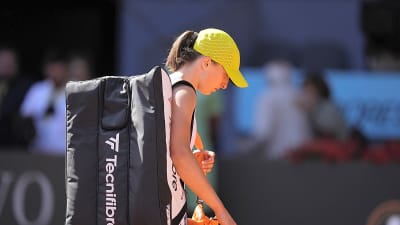
While scrolling through X, I came across an eye-opening post from Baseball America’s JJ Cooper, teasing one metric that had an 88% success rate of determining prospects reaching the major leagues. His answer was top-tier fastball velocity, specifically the ability to touch 100+ MPH.
Top-tier fastball velocity.
— JJ Cooper (@jjcoop36) April 29, 2025
Of the 71 MiLB pitchers we tracked in 2016 who touched 100 mph that year, 47 (66%) went on to play in the majors. Of the 11 who touched 102, 10 (91%) pitched in the majors.
Of the 77 from 2018 MiLB who touched 100 mph, 68 (88%) would play in majors. https://t.co/5J4nzuNpeN
While Cooper's post doesn't dive deeper into why or how these pitchers ultimately fared in the major leagues, it's still a remarkable find nonetheless.
It makes sense that teams would value having that kind of velocity. Throughout the entire Statcast era, which started in 2015, opposing batters are hitting .198 with a .282 slugging percentage and a 28.4% whiff rate against 100+ MPH fastballs. That's more than a decade's worth of data, so there's a clear trend here that major league hitters struggle against high-end velocity.
Finding pitchers who can throw that hard is easier said than done. There aren't many arms blessed with the ability to throw a baseball over 100 MPH and know where the ball is going. Since Mike Hazen took over as the Diamondbacks' general manager ahead of the 2017 season, there have only been five pitchers who have hit 100 MPH in a game. 575 of the 593 pitches at that velocity belong to Justin Martinez.
Martinez is the first true success case for the organization developing that type of arm. Coming off Tommy John surgery in 2021, he quickly transitioned into a reliever the following season and was in the big leagues in just one calendar year. Because of his potential, he received a five-year extension and is expected to anchor the back of the bullpen for years to come. (Recent Injured list stint notwithstanding)
Looking further down the Diamondbacks' farm system, there are a handful of hard-throwing arms worth a look. We'll start with the two guys currently on the 40-man roster then work into the minors.
Juan Morillo
The Diamondbacks signed Morillo to a minor league deal in November and it's already looking like a great pickup. The 26-year-old right-hander showed improved command in Spring Training and the first two weeks of the minors, prompting a call-up on April 19th.
In his early taste of the big leagues, Morillo is showing promise. He has a 0.00 ERA in four outings, each going one inning, with a 31.3% strikeout rate. Batters are hitting .214 against him with no extra-base hits, with an average exit velocity of just 85.1 MPH.
He prominently features a four-seam fastball, throwing it 65.7% of the time. The pitch has a more vertical shape than most fastballs, with 16.5 inches of induced vertical break and just 4.8 inches of arm-side run. He's been locating it at the top of the zone and above, which is why the whiff rate is 31.8%.
As Morillo gets more comfortable in the big leagues, he should start filtering towards the back end of the Diamondbacks bullpen. With the swing-and-miss fastball and further development of his slider and changeup, he should develop into a high-leverage arm if he stays healthy.
Drey Jameson
Jameson has been lighting up the radar gun since the Diamondbacks drafted him as a supplemental first rounder in 2019. This spring, he got up to 101 MPH in an outing against the Los Angeles Dodgers. The right-hander's velocity is back in his return from September 2023 Tommy John surgery.
Despite averaging 98.3 MPH, his fastball got hit pretty hard in his first stint in the major leagues since 2023. Part of the issue is that despite the velocity, Jameson's fastball doesn't get a lot of ride. As a result, it's a much more hittable pitch when located up in the zone than you'd expect based on the velocity readings.
When he was sent down earlier this week, manager Torey Lovullo told Chris Garagiola on Dbacks Radio on Tuesday that pitch shaping and command are the two biggest things for Jameson to work on in Triple-A. It was a similar reason he was sent down in 2023 for the first time, although he was being utilized as a starter at the time.
To get better results on his fastball moving forward, he'll need better command of both his fastball and slider. Since the fastball isn't a standalone pitch he can dominate hitters with, he'll need to be able to change speeds and locations to get hitters out. Once he figures that out, he's a candidate to be a back of the bullpen arm in the future.
Possible Hidden Gems in the Minors
In their system, the Diamondbacks have three pitchers with High-A Hillsboro that can light up the radar gun: Hayden Durke, Edgar Isea, and Sam Knowlton. Each one of these pitchers has had varying degrees of success so far this year. Pitchers who can throw at that velocity over the plate are going to miss a lot of bats.
Durke has been the most successful of the three despite only a top speed of 99 MPH in his career. In eight games this year, he has a whopping 22 strikeouts to six walks over 11.1 innings. On a rate basis, that's a 51.2% strikeout rate compared to a 14.0% walk rate. His 37.2% K-BB% leads the club and is second in the Northwest League.
He's improved his strike-throwing ability this season, with a 53.5% first-pitch strike rate. With the stuff that he has, as FanGraphs projects him to develop a 55-grade fastball, 60 curveball, and 60 slider, jumping ahead of hitters is the bigger battle than putting them away. It might not be long before the organization puts him in a more challenging environment like Amarillo.
Isea and Knowlton are much further behind Durke in their ability to consistently throw strikes. Both pitchers are sporting walk rates over 20%, which is never a good sign for any pitcher. Because they throw that hard, they will get plenty of opportunities to show they can throw strikes unless it's painfully obvious they can't improve. Given that both Durke and Martinez have shown improved strike-throwing ability in recent years, it's too early to give up on either pitcher.
It shows that even for pitchers throwing fastballs at 101-102 MPH, commanding the strike zone still matters to retire hitters at any level. Even for a metric that has an 88% success rate of reaching the majors, there are a handful of guys that fall through the cracks, whether it's injuries or the inability to throw strikes.
In today's era of baseball, stuff is king. Having more guys who can command 100+ MPH is an asset to a pitching staff looking to build a shutdown bullpen. For the Diamondbacks, who are a mid-market team, they're more likely to get that arm from developing pitchers rather than signing them in free agency. To compete in what is now a very strong National League, they will need to develop these arms for their bullpen to remain competitive in the playoff picture.
More must-reads:
- Juan Soto addresses if he's pressing amid slow start to Mets tenure
- Angels star Mike Trout's poor injury luck continues
- The '2024-25 NBA assist leaders' quiz
Breaking News
Trending News
Customize Your Newsletter
 +
+
Get the latest news and rumors, customized to your favorite sports and teams. Emailed daily. Always free!








